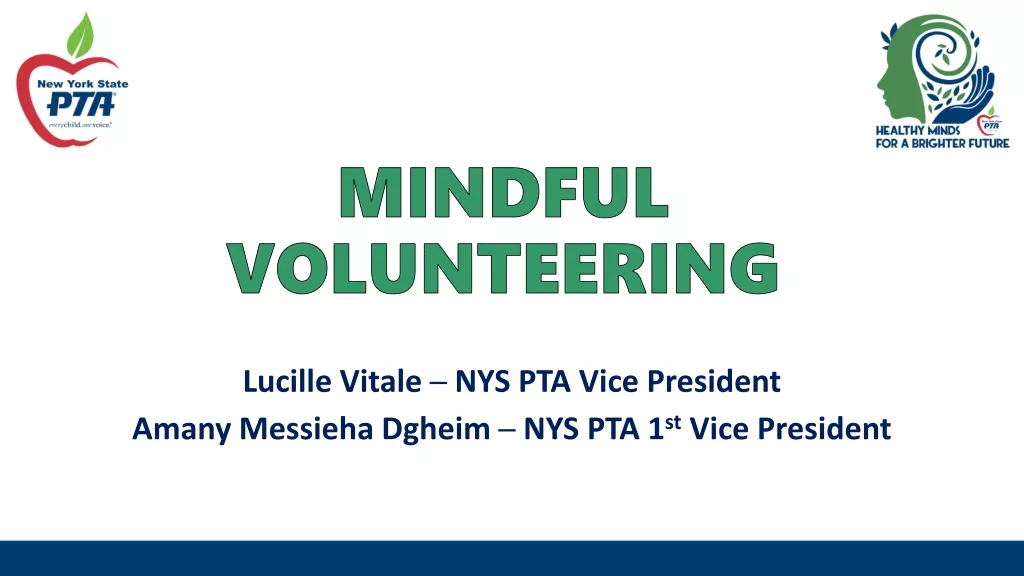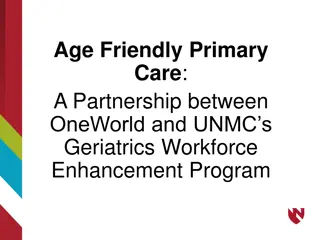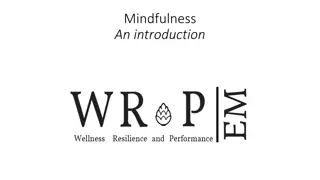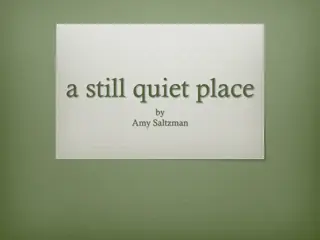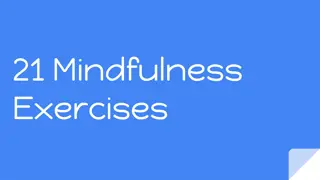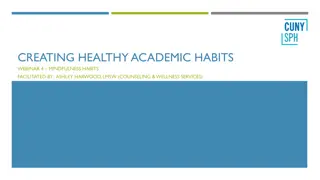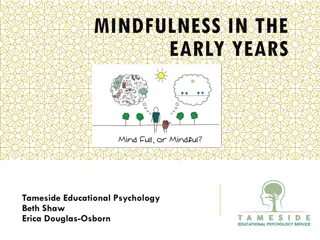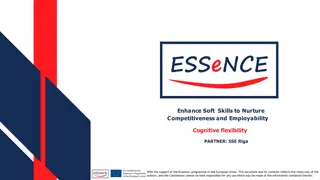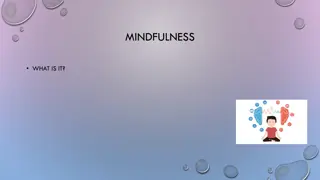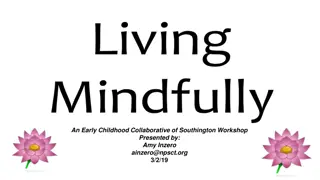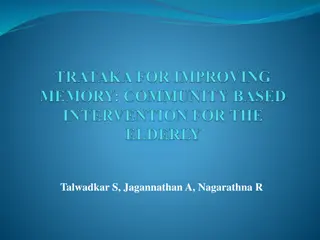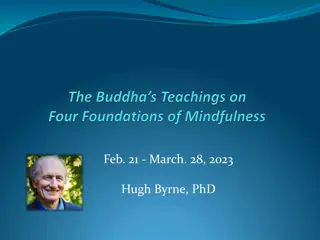Unleashing the Power of Mindfulness for Cognitive Enhancement
Explore the fascinating realm of mindfulness and its remarkable impact on cognitive function. Delve into the neuroscience behind mindfulness practice, uncovering how it affects brain regions like the medial prefrontal cortex and the hippocampus. Discover the two distinct networks in the brain, the Default network, and Direct Experience, and learn how mindfulness can shift your focus from ruminative thinking to present moment awareness, leading to enhanced clarity and rationality. Embrace the transformative potential of mindfulness in cultivating a more balanced and resilient mind.
Download Presentation

Please find below an Image/Link to download the presentation.
The content on the website is provided AS IS for your information and personal use only. It may not be sold, licensed, or shared on other websites without obtaining consent from the author. Download presentation by click this link. If you encounter any issues during the download, it is possible that the publisher has removed the file from their server.
E N D
Presentation Transcript
MINDFULNESS Most impact Least resources The key is to be able to explain the actual neuroscience involved.
The medial prefrontal cortex, along with memory regions such as the hippocampus. The Brain Major breakthrough 2007 neuroscientists Two distinct networks 1. Default network or Narrative circuit planning, worrying, ruminating. Thinking about yourself and others, your history, past, future an intricate web a giant tapestry.
Activity Think about your own Default network, narrative circuit. When you are travelling to work in a morning what setting are you using? When you go about your everyday life what setting do you use? Grade yourself 1-10 10 being I am thinking, planning what I need to do all of the time. 1 being I think and plan, create narratives hardly ever and my mind is in a restful state most of the time.
The Brain Activates Insular and anterior cingulate cortex 2. Direct Experience Experiencing sensations coming into your body in real time not thinking about the past or the future, yourself or others.
Inversely Correlated Sadly, even a cold beer doesn't taste as good in this state. 1. Narrative and 2. Direct experience, are inversely correlated. That is you don't see as much (or hear as much, or feel as much, or sense anything as much) when you are lost in thought.
Mindfulness When you focus your attention on the here and now you stop the narrative circuit This explains why if your narrative circuitry is going crazy worrying about an event it helps to take a deep breath and focus on the present.
Two Thinking Patterns 1.Narrative Circuitry - Fast, planning, reaching for memory and projecting possibilities often don t happen and can be negative 2.Direct Experience the hear and now, calms the brain, you can think more rationally without making assumptions
Mindfulness The trick is being able to identify the two patterns and being able to change from one to the other. Most people follow the narrative path most of the time. This can be extremely detrimental to their well- being and their physiology.
Mindfulness is not difficult the hard part If you're on the jetty in the breeze and you're someone with a good level or mindfulness, you are more likely to notice that you're missing a lovely day worrying about tonight's dinner, and focus your attention onto the warm sun instead. is remembering to do it John Teasdale
Classroom Not easy when your thought patterns are cemented, habit for us older ones. Children have much better chance of making the two pathways more equal. Practice every day in the classroom for a short time many online short breathing exercises. Secondary part of every day lessons. Explanation of why it is good for them.
Chocolate or Strawberry Look at your chocolate or strawberry look at the wrapper/skin, beautiful shiny paper, bright colour, smell listen to the wrapper as you unwrap it. Or listen as you bite into your juicy strawberry. Take a nibble, swish around your mouth, feel the texture in your mouth.
Neuro Linguistic Therapist To get you to sleep Two surfaces
Mindfulness Paying more attention to the present moment to your own thoughts and feelings, and to the world around you can improve your mental wellbeing. "Mindfulness also allows us to become more aware of the stream of thoughts and feelings that we experience, "and to see how we can become entangled in that stream in ways that are not helpful. This lets us stand back from our thoughts and start to see their patterns. Gradually, we can train ourselves to notice when our thoughts are taking over and realise that thoughts are simply 'mental events' that do not have to control us.




